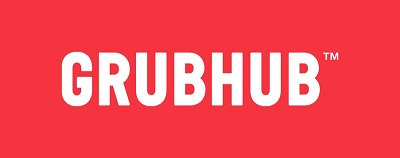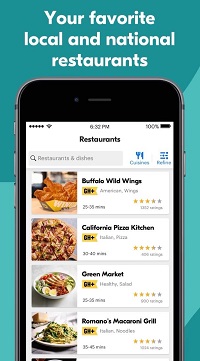How Does Grubhub Make Money?

Grubhub is one of the most popular food order and delivery apps out there. It’s a platform that features a wide variety of different restaurants to order from. But what makes it so popular?
Grubhub has managed to spread out over 1,700 cities throughout the US and has even reached London, England. This was in 2018. Since then, they’ve only grown bigger.
There’s a lot to learn from Grubhub’s business model. Many of its competitors as well as food unrelated businesses should take note.
Here’s how Grubhub makes money.
The Value Proposition
Understanding a business’s value proposition is essential to understanding how it makes money, full-stop.
Grubhub manages to generate takeout orders of higher margins, while retaining full menu prices. This is the unique value proposition that Grubhub has delivered.
Takeout is a great way to grow a restaurant business at a limited cost – no extra seating capacity/staff costs.
The main thing that Grubhub boasts is relief in terms of takeout promotion. Where having your restaurant on Grubhub is takeout promotion in itself, doing the default takeout promotion would cost a lot of money. Plus, it’s not really easily trackable.
On Grubhub, any restaurant can easily track orders.

Being Compelling
To become a successful, profitable takeout order service for restaurants, you need to be compelling for restaurants. Clearly, Grubhub fits this description. But what makes the service so successful?
Well, first of all, Grubhub doesn’t charge subscription/upfront fees. Also, perhaps even more importantly, the service doesn’t ask restaurants to apply discounts to their menu. This might not seem like much, but many of Grubhub’s competitors include this in their business models. And, finally, the best part – a restaurant is only required to pay Grubhub when the orders are generated.
So, in summary, Grubhub features high returns at low risk. The service is very efficient, requires no upfront costs or subscription fees, while being very trackable.
This is what makes Grubhub so compelling for restaurants.
So, How Does Grubhub Make Money?
It’s straightforward – Grubhub makes money through per-order, percentage-based commissions. Although mainly a takeout order service, Grubhub also provides delivery services for some restaurants.
In addition, every time a diner places an order using the Grubhub platform, the company generates revenue.
Naturally, restaurants that use Grubhub delivery pay additional commission.
Growth Drivers
Profitability is tightly related to growth. Growth needs to be consistent over the years, or the business gets swallowed up by the competition.

Grubhub has also excelled in this department, providing consistent growth since the service’s inception. This growth was successful thanks to marketing, acquisition, platform improvements, and so on.
Digging into Grubhub’s growth drivers is an essential factor in realizing how the service makes money.
Marketing
There’s no growth without investment. Back in 2017, Grubhub spent more than 20% of its entire revenue on sales and marketing. These expenses included search engine marketing, online display, television, media, and many other platforms.
Plus, Grubhub has been investing massive amounts of finance in digital marketing campaigns. As a result, it’s now one of the most popular sites for delivery and restaurants in the entire United States.
Acquisitions
An essential part of achieving growth is making acquisitions. There are many businesses that pop up all over the place in this business climate that simply don’t make the cut. Alternatively, the owners prefer selling out and settling down. They, however, remain profitable. Acquiring these assets is an essential growth aspect.
Over the years, Grubhub has enhanced its assets and ensured superior profitability by acquiring a wide variety of assets.
How Much Does Grubhub Make from the Service It Provides?
In simple terms, this is how Grubhub earns from its service. It charges a small fee for each order achieved. In other words, the company takes a tiny chunk for each order. So, if there are 20 daily orders from a restaurant via Grubhub, the company gets 20 small pieces of profit.
But how much do they earn? Well, there isn’t a fixed rate here. It’s a bit more complicated, although the principle remains simple. Each restaurant sets the amount Grubhub takes from it. The higher the rate, the higher the placement on Grubhub a restaurant will get.
There are two primary means Grubhub resorts to for making money with its service: users ordering from restaurants/diners and diners ordering from restaurants.
The primary source of income here is the latter one, as Grubhub primarily gets paid when a diner places an order from a restaurant. This is because diners tend to (naturally) place significantly bigger orders. And this happens often, in any case.
Of course, the restaurants choose their commission rate here, as well. And yes, the Grubhub placement depends on the decided-upon commission rate.
This is the so-called a notorious “paid inclusion,” which is regarded as quite a controversial way to gain profit. However, it’s completely legal and works perfectly for Grubhub. If search engines can do it, why shouldn’t a takeout delivery service be able to?
Why Do People Use It?
At the very core of any company’s profit lies the question of the value to its users. What makes Grubhub so valuable that they prefer this service to a wide variety of others that are available?
Well, the most critical factor here is that Grubhub is a mere intermediary between the user and the restaurant. There’s no real difference between using Grubhub and your phone to make an order. Of course, using this service is much less personal and, therefore, significantly more comfortable for most users.
This goes the same for diners ordering from restaurants.
Grubhub’s Business Model
Although Grubhub has many competitors that offer similar services, they don’t provide the same services that Grubhub does. This, along with years of sound investment decisions, is what makes Grubhub’s business model bullet-proof. And it’s how Grubhub makes money and will continue achieving a profit.
Has this insight into Grubhub’s business model been helpful? Have you learned anything about the takeout delivery industry? If you have any questions about this service’s business model, feel free to fire away in the comments section below.
















